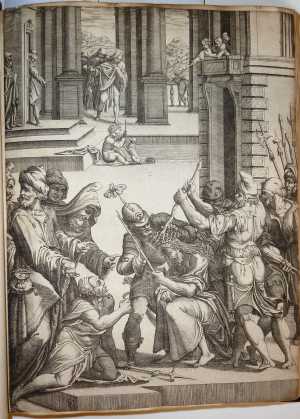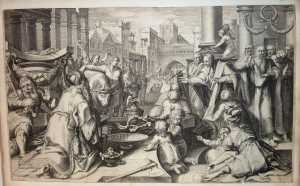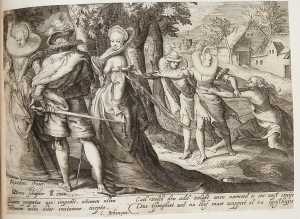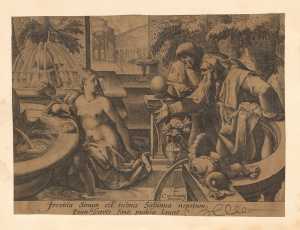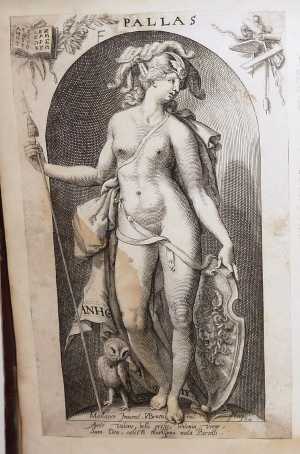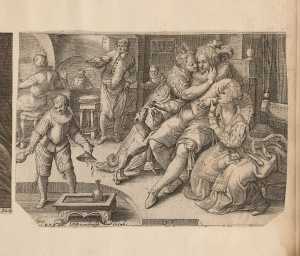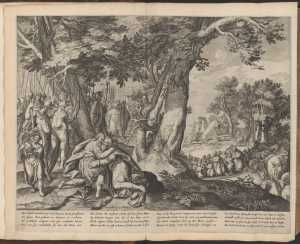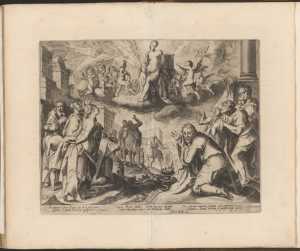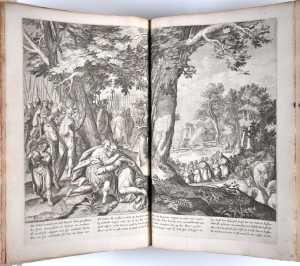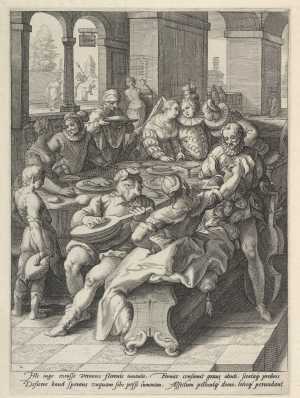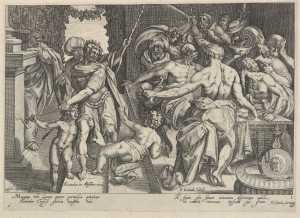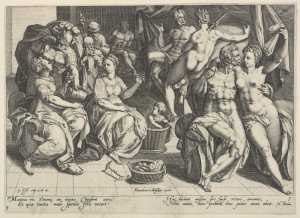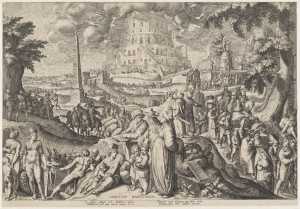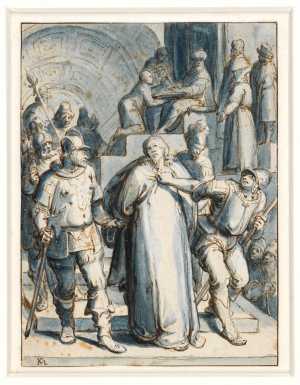Karel van Mander travelled to places such as Vienna and Rome, and then settled in Haarlem. Together with the artists Hendrick Golzius and Cornelisz. van Haerlem he studied classical Italian painting. In 1604 he published his 'Painter Book', in which he wrote biographies of Northern and Southern European artists. He took the Italian biographer Giorgio Vasari as his example. His painter book is still an important source of knowledge about the artists of the 16th century.
Author: Albert Elen
The Baptist Haarlem artist Karel van Mander (1548-1606) originated from the Southern Netherlands, born in a village between Courtrai and Bruges in an old noble family from Flanders. He was apprenticed to subsequently the painter-poet Lucas de Heere in Ghent and, in the years 1568-1569, the painter Peter Vlerick in Courtrai and Tournai. Van Mander devoted himself to poetry during the years afterwards, writing morality plays. In the years 1574-1577 he made a journey to Rome, returning home by way of Basel and Vienna. Due to the turmoil in the southern part of the Netherlands, caused by religious upheaval and the subsequent repression by the Spanish troops, he migrated north with his wife and children in 1583 and settled in Haarlem. There he continued to write, draw and paint.
His reputation as an artist is equaled if not surpassed by his fame as the author of the renowned Schilder-Boeck. This book on painting, published in Alkmaar in 1604, contains views on the theory of art, including the didactic poem on ‘the foundations of the noble, free art of painting’, an adaptation of Ovid’s Metamorphoses and descriptions of the lives and works of Netherlandish and German painters, including many contemporaries from the low countries, some of whom he had personally known. His own biography, which would have been an autobiography, was modestly left out and was added twelve years after his death in the 1618 edition of the Schilder-Boeck.1 It is quite lengthy and offers detailed information, from birth to burial.
Van Mander belongs to the small group of mannerist artists from Haarlem who created a craze in the last quarter of the sixteenth century, in part through the widespread distribution of their prints. Their source of inspiration was Italy, where some of them had travelled, including Van Mander and his good friend Bartholomeus Spranger, who had actually first met in Rome.
Van Mander’s life and work have been thoroughly researched and published, especially by Hessel Miedema (annotated English translation of the Schilder-Boeck in six volumes, published in 1994-1997, and a catalogue raisonné in 1995) and Marjolein Leesberg (several articles since 1996 and the New Hollstein volume of the prints in 1999).
Compared to his friend and fellow townsman Goltzius, relatively few drawings of Van Mander have survived, a hundred at most.2
Footnotes
1 Van Mander 1618, fols R1r-S3v (ed. Miedema 1994, vol. 1, pp. 2-35).
2 Miedema 1995 includes sixty drawings, but only those related to prints.



